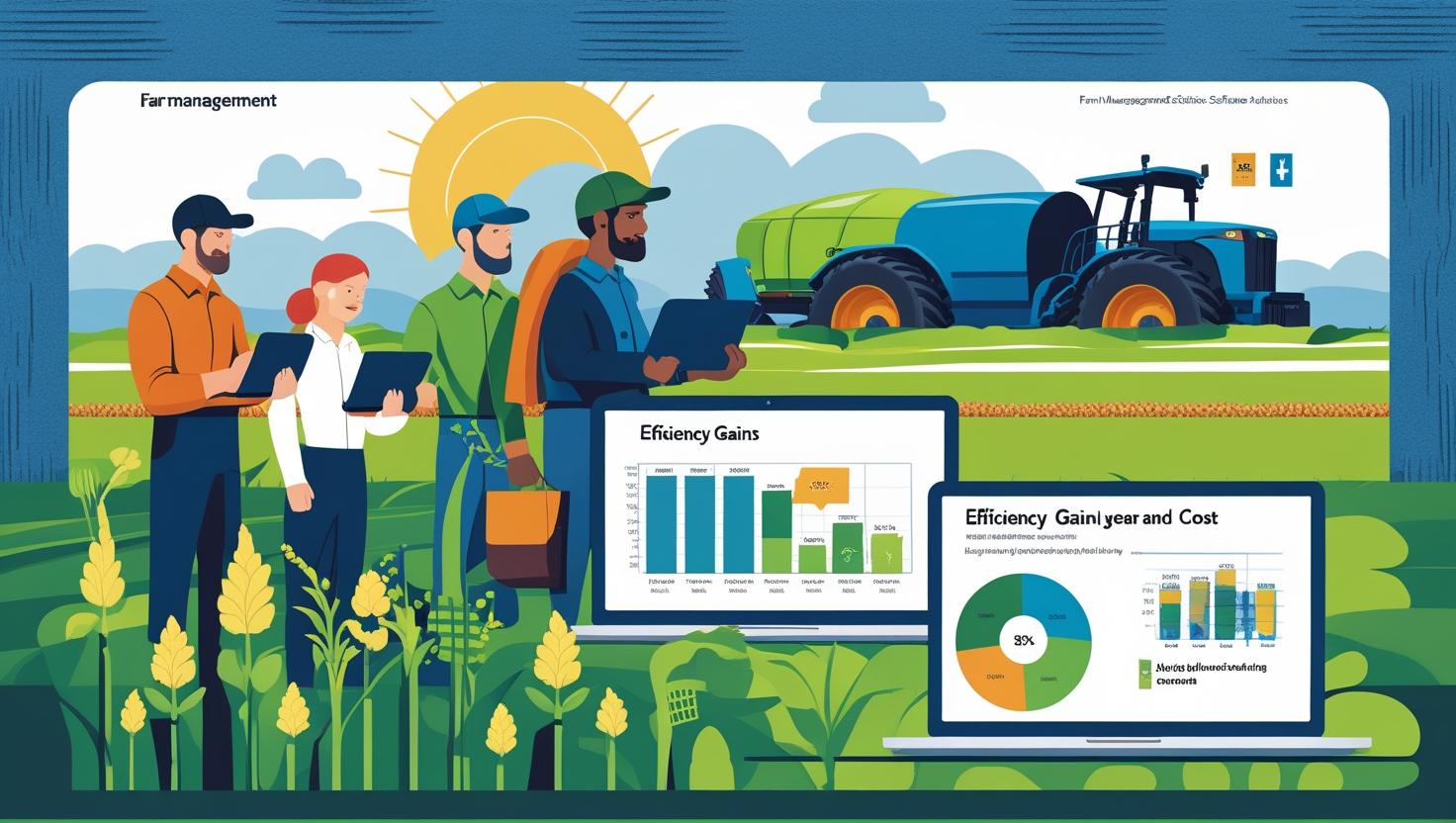The global farm management software market is undergoing a significant transformation, driven by the growing demand for precision agriculture, sustainable farming practices, and enhanced productivity through digital solutions. As agricultural activities increasingly rely on data and automation, the market for farm management software (FMS) is expected to witness robust growth between 2024 and 2029. This software encompasses a broad range of tools that help farmers and agribusinesses efficiently manage their operations, including crop planning, livestock monitoring, financial tracking, equipment monitoring, and compliance management. With the integration of technologies such as IoT, AI, big data, and cloud computing, farm management software is becoming a cornerstone of modern agriculture.
In terms of market size, the farm management software industry is poised for accelerated growth due to the rising need for optimizing farm production and minimizing resource wastage. According to industry estimates, the market is expected to grow at a strong compound annual growth rate (CAGR) during the forecast period from 2024 to 2029. This surge in growth is primarily attributed to increasing global population, shrinking arable land, and the need for higher crop yields to ensure food security. Furthermore, government initiatives supporting the adoption of digital agriculture solutions are bolstering the market expansion across developing and developed economies alike.
Download PDF Brochure @ https://www.marketsandmarkets.com/pdfdownloadNew.asp?id=217016636

The market share for farm management software is distributed among a diverse group of players offering specialized and integrated solutions tailored for different farming needs. Key market segments include software for crop management, livestock management, financial management, inventory management, weather monitoring, and farm analytics. Among these, the crop management software segment holds a dominant share due to its wide application across different crop types and ease of integration with hardware solutions such as drones, sensors, and satellite imagery. Large farms with substantial budgets are early adopters of advanced software, but the growing affordability of cloud-based and mobile farm management solutions is enabling small and medium-sized farms to join the digital transformation.
From a deployment standpoint, the cloud-based segment is gaining traction and is expected to continue dominating the market throughout the forecast period. Cloud platforms provide flexibility, real-time data access, and easy scalability without the need for expensive on-premises infrastructure. In contrast, on-premise solutions still retain a share among enterprises with data security concerns and limited internet connectivity, especially in remote regions. However, as internet penetration continues to improve in rural areas, the cloud-based model is likely to witness exponential adoption.
Regionally, North America holds the largest market share in the farm management software industry, thanks to the presence of well-established agritech companies, advanced infrastructure, and high awareness among farmers. The United States, in particular, is at the forefront due to its early adoption of precision agriculture technologies and the presence of a tech-savvy farming community. Europe follows closely with countries such as Germany, France, and the Netherlands investing heavily in smart farming solutions. The Asia-Pacific region is expected to register the fastest growth during the forecast period, propelled by the increasing population, rapid urbanization, rising food demand, and government-led digitization efforts in agriculture. Countries like India, China, and Australia are witnessing a surge in agritech startups and digital initiatives aimed at empowering farmers with modern tools.
The market trends indicate a growing emphasis on integration and interoperability. Farmers are demanding software platforms that can seamlessly connect with various farm equipment, sensors, weather stations, and financial systems. This has led to increased collaboration between software providers, hardware manufacturers, and service integrators. Additionally, mobile-first solutions are gaining popularity, as smartphones become ubiquitous even in rural areas. The user-friendly interface, offline access capabilities, and real-time data sync features make mobile apps a practical choice for farmers on the field.
Artificial intelligence and machine learning are reshaping the farm management software landscape by enabling predictive analytics, anomaly detection, and prescriptive decision-making. These technologies help in forecasting crop yields, identifying pest infestations, optimizing irrigation, and managing input costs more effectively. The integration of satellite imagery and remote sensing tools is further enhancing the accuracy and usability of FMS platforms. Furthermore, the incorporation of blockchain is improving transparency and traceability in the agri-food supply chain, making farm data more secure and trustworthy.
Frequently Asked Questions (FAQs) on the Farm Management Software Market
- What is Farm Management Software?
Farm Management Software (FMS) is a digital tool that helps farmers and agribusinesses plan, monitor, and analyze all farming activities, including crop planning, labor management, inventory tracking, equipment monitoring, financials, and compliance, thereby improving efficiency and profitability. - What is driving the growth of the farm management software market?
The market is growing due to the increasing adoption of precision farming techniques, rising demand for food due to population growth, the need to optimize resource usage, and the availability of government incentives for digitizing agriculture. - Which technologies are transforming the farm management software industry?
Technologies such as IoT, artificial intelligence (AI), cloud computing, GPS, remote sensing, and data analytics are significantly enhancing FMS capabilities by enabling real-time insights, automation, and predictive decision-making. - Who are the major players in the farm management software market?
Leading players include Trimble Inc., Deere & Company, AG Leader Technology, AgJunction, Topcon Positioning Systems, Raven Industries, Granular, and Farmers Edge, each offering robust solutions tailored to different farm sizes and needs. - Which regions are leading in the adoption of farm management software?
North America leads the market due to advanced agricultural infrastructure and strong tech integration, followed by Europe and Asia-Pacific, with the latter witnessing rapid adoption due to growing agritech investment and food security needs.
See Related Semiconductor Reports:
Testing, Inspection, and Certification (TIC) Market by Service Type (Testing, Inspection, Certification), Source (In-house, Outsourced), Application (Consumer Goods & Retail, Agriculture & Food, Chemical, Energy & Power) – Global Forecast to 2030
Smart Agriculture Market by Precision Farming, Livestock Monitoring, Precision Aquaculture, On-Cloud, On-Premises, System Integration & Consulting, Harvesting Management, HVAC Management and Water and Fertilizer Management – Global Forecast to 2029
